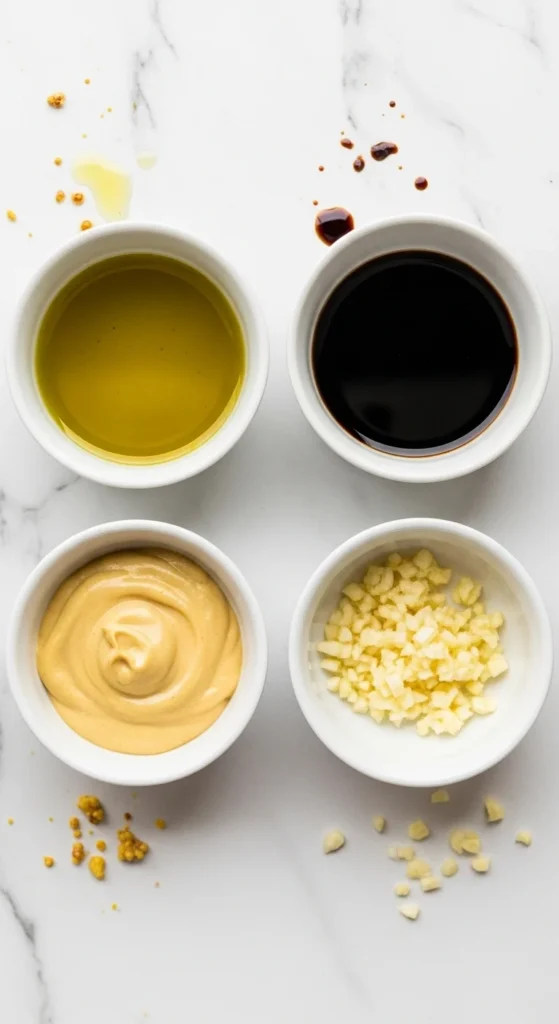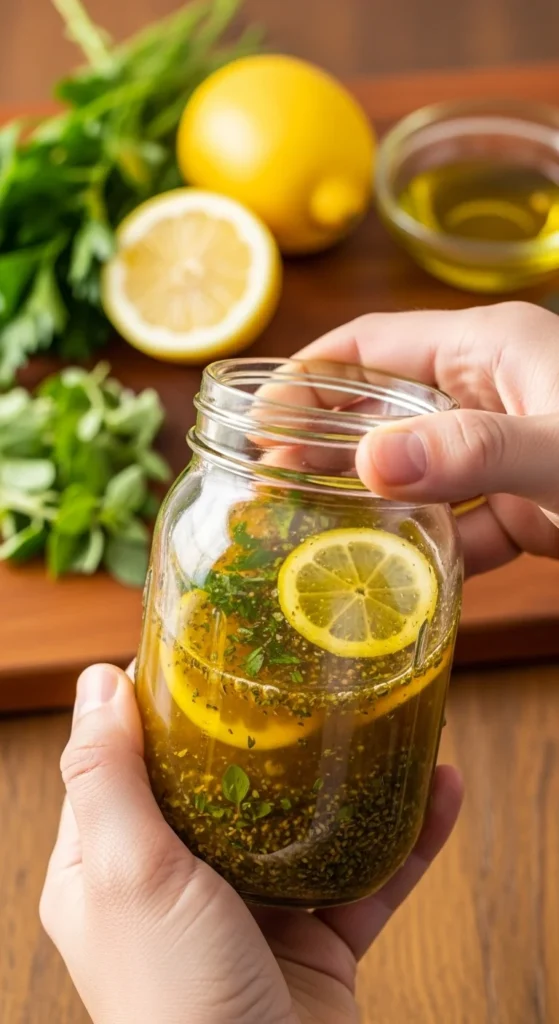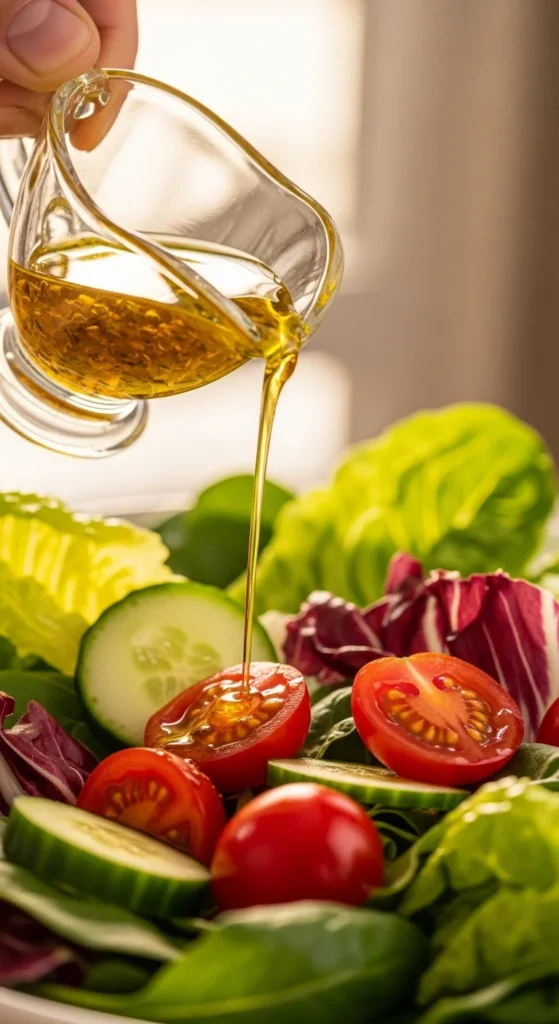A homemade vinaigrette is one of those small kitchen secrets that instantly makes your salads, roasted veggies, and even grilled meats taste fresher and more gourmet. It takes less than five minutes, uses pantry staples, and tastes far better than any bottled dressing. Once you master it, you’ll never go back.

Why Homemade Vinaigrette Is a Game Changer
If you’ve ever drizzled a store-bought dressing and felt the overpowering tang or artificial sweetness, you’ll appreciate how customizable a homemade vinaigrette is. You control every flavor — from tangy and sharp to smooth and mellow.
Plus, it’s:
- Healthier: No preservatives or unnecessary sugars.
- Cheaper: Uses ingredients you already have.
- Flexible: Easily adaptable for any cuisine or meal.
Once you know the formula, you can whip up countless variations in under 2 minutes.
The Basic Vinaigrette Formula
Every vinaigrette starts with a simple ratio:
3 parts oil : 1 part acid
That’s your golden rule. From there, add seasonings and optional mix-ins to make it shine.
Core Ingredients:
- Oil (3 parts): Extra virgin olive oil is the classic choice. For milder flavor, try avocado oil, sunflower oil, or walnut oil.
- Acid (1 part): Vinegar or citrus juice. Options include:
- Red wine vinegar (bold)
- Balsamic vinegar (sweet)
- Apple cider vinegar (tangy)
- Lemon juice (fresh and bright)
- Red wine vinegar (bold)
- Emulsifier (optional but helpful): Dijon mustard, honey, or a bit of mayonnaise helps blend the oil and vinegar together.
- Seasonings: Salt, pepper, and a little minced garlic or shallot go a long way.

Step-by-Step: How to Make It
You don’t need any fancy tools — just a jar with a tight lid or a small whisk and bowl.
Step 1: Add the Acid and Emulsifier
Pour 1 tablespoon of vinegar or lemon juice into your jar. Add a teaspoon of Dijon mustard or honey. These help balance the flavor and keep the dressing smooth instead of separating.
Step 2: Add Seasonings
Sprinkle in a pinch of salt, black pepper, and (optional) minced garlic or shallots. Stir or shake lightly to dissolve the salt.
Step 3: Add the Oil
Pour in 3 tablespoons of oil. Close the lid and shake vigorously for 15 seconds, or whisk in a bowl until creamy and blended.

Step 4: Taste and Adjust
Dip a lettuce leaf or piece of bread into the vinaigrette. Need more tang? Add a few drops of vinegar. Too sharp? Add a drizzle more oil or honey.
Flavor Variations to Try
Once you’ve nailed the base, the fun begins. Customize it to match any meal or craving.
- Italian Herb Vinaigrette: Add dried oregano, basil, and a splash of red wine vinegar.
- Honey Mustard Vinaigrette: Whisk in extra Dijon mustard and 1 teaspoon of honey for sweetness.
- Citrus Vinaigrette: Use fresh orange or lemon juice for the acid and add a bit of zest for brightness.
- Garlic Parmesan Vinaigrette: Mix in a spoonful of grated Parmesan and a crushed garlic clove for a rich flavor.
- Asian-Inspired Vinaigrette: Combine rice vinegar, sesame oil, soy sauce, and a touch of ginger.

Pro Tips for Perfect Vinaigrette Every Time
- Use high-quality oil: The flavor of your olive oil truly matters here.
- Shake before every use: Natural separation is normal.
- Store properly: Keep your vinaigrette in the fridge for up to one week. Let it sit at room temperature for 10 minutes before using.
- Balance flavors: Sweet (honey), salty (salt), tangy (vinegar), and fatty (oil) should all harmonize.

How to Serve It
Homemade vinaigrette is far more versatile than you might think:
- Salads: Drizzle over fresh greens or pasta salads.
- Grilled veggies: Toss roasted carrots, asparagus, or zucchini in it for flavor.
- Marinade: Perfect for chicken, shrimp, or tofu.
- Bread dip: Pair with crusty bread as a quick appetizer.
It’s one of those all-purpose recipes that instantly elevates whatever it touches.
Final Thoughts
Learning how to make a quick homemade vinaigrette is one of the easiest ways to bring restaurant-quality flavor to your kitchen. With just a few pantry staples and a jar, you’ll have a bright, zesty dressing ready in minutes.
Next time you’re about to reach for that store-bought bottle—pause, grab your olive oil and vinegar, and shake up something fresh.



Leave a Reply